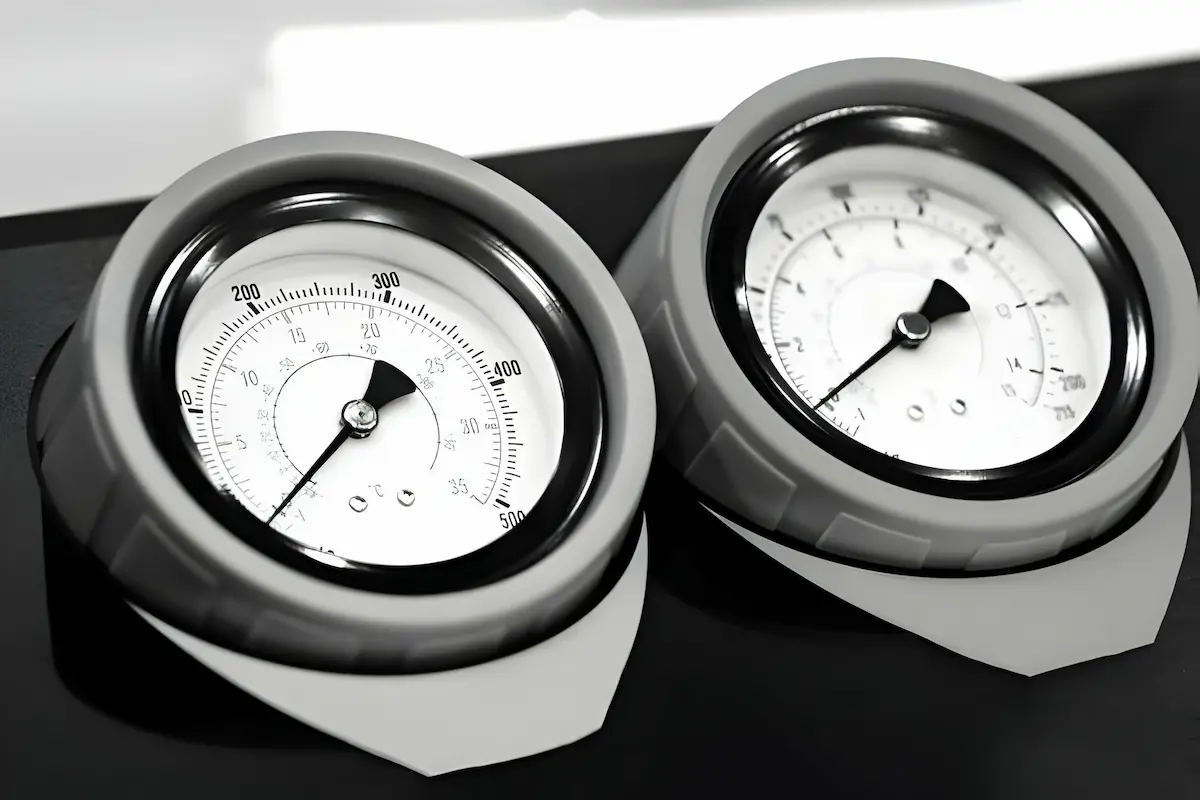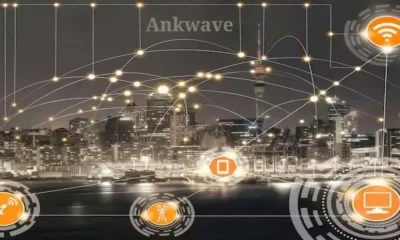LIFESTYLE
Understanding Vacumetros | A Comprehensive Guide
Published
2 months agoon
By
Pass
Vacuum meters, or “vacumetros,” are essential instruments used to measure the pressure in a vacuum. These devices are crucial for applications where air or other gases need to be removed to create low-pressure environments. Vacuum meters play a significant role in various industries, including manufacturing, scientific research, and HVAC systems. Whether you’re working in a laboratory or designing vacuum systems, understanding the principles and types of vacuum meters is vital for accurate measurement and ensuring optimal system performance. This article will explore the different types of vacuum meters, how they work, their applications, and how to choose the right one for your needs.
What Are Vacumetros?
Vacumetros are devices designed to measure the pressure in a vacuum system. Pressure in a vacuum refers to a condition where the air pressure is significantly lower than atmospheric pressure. These meters are used to gauge how much gas or air is present in the system, indicating the quality of the vacuum created. The role of vacuum meters is crucial for processes that require low-pressure environments, such as vacuum chambers, freeze-drying, semiconductor manufacturing, and many laboratory experiments.
Vacuum meters measure the vacuum’s intensity, usually in units of pressure such as torr, pascal (Pa), or microns. The pressure range that these meters measure can vary depending on the device’s technology and the requirements of the application. Vacuum meters can be classified based on the pressure range they measure, the technology used for measurement, and their application in various industries.
Types of Vacumetros
There are several types of Vacumetros available, each designed for specific uses. The most common types include mechanical gauges, thermal conductivity gauges, and ionization gauges.
Mechanical Gauges:
Mechanical vacuum gauges are among the most commonly used devices. These gauges work by measuring the physical displacement of a spring or diaphragm, which is affected by changes in pressure. As the vacuum increases and the pressure drops, the diaphragm or spring inside the gauge moves, providing an indication of the vacuum level. Mechanical gauges are often used in applications where high accuracy is not required. Examples include Bourdon tube gauges and diaphragm gauges.
Thermal Conductivity Gauges:
These gauges work on the principle that the thermal conductivity of a gas changes with pressure. A heated element inside the gauge transfers heat to the gas, and the amount of heat transferred is inversely related to the gas pressure. These gauges are often used for medium vacuum ranges and can measure pressures from 1 to 10^-3 torr. They are typically used in industrial applications where precise vacuum levels are not critical, such as in vacuum ovens or pumps.
Ionization Gauges:
Ionization gauges are the most accurate type of vacuum meter and are used in high-vacuum applications. These gauges operate by ionizing the gas inside the vacuum and measuring the current produced by the ions. The amount of current is directly proportional to the number of gas molecules present, providing an accurate measurement of the pressure. Ionization gauges are capable of measuring pressures as low as 10^-12 torr and are essential in applications such as electron microscopes and particle accelerators.
How Do Vacumetros Work?
Vacumetros function by measuring the pressure exerted by the gases in the system. In general, they operate by detecting physical changes within a sensor or element when the pressure changes. The core principle behind their working mechanism is the relationship between gas pressure and the behavior of the sensing element.
For example, in mechanical gauges, as the gas pressure decreases, the spring or diaphragm moves in response to the change in pressure, and the meter displays a corresponding value. In thermal conductivity gauges, as the pressure decreases, the number of gas molecules present in the system drops, resulting in less heat transfer from the heated element, which is then translated into a pressure reading. In ionization gauges, gas molecules are ionized by an electrical current, and the resulting ion current is measured and used to calculate the pressure.
Each of these methods provides a different way to measure pressure, depending on the precision required and the range of vacuum needed.
Applications of Vacumetros
Vacumetros are used in a wide range of industries and scientific applications. Their versatility makes them indispensable in many fields. Below are a few examples of how vacuum meters are utilized across different industries.
Manufacturing and Engineering:
In manufacturing, vacuum meters are often used in processes such as vacuum casting, molding, and packaging. These processes require precise control over the vacuum level to ensure the desired quality of the final product. Vacuum meters are essential for controlling the pressure in vacuum chambers used for coating and deposition processes.
Semiconductor Manufacturing:
In the semiconductor industry, vacuum meters are critical in creating the low-pressure environments necessary for deposition processes and for maintaining cleanroom conditions. Precise vacuum control is essential for preventing contamination and ensuring the quality of semiconductor devices.
Scientific Research and Laboratories:
Vacuum meters are also widely used in scientific research. For example, in laboratories where high-vacuum conditions are required, such as in particle accelerators, vacuum meters help scientists monitor the pressure within experimental setups to ensure the integrity of their research.
HVAC Systems:
In HVAC (Heating, Ventilation, and Air Conditioning) systems, vacuum meters are used during system maintenance to ensure the system operates under the correct vacuum pressure. They are essential for detecting leaks and ensuring the efficiency of refrigeration and air conditioning systems.
How to Choose the Right Vacumetros
Selecting the correct Vacumetros for a specific application depends on several factors. The primary considerations include the pressure range, accuracy requirements, and the type of gases in the system.
Pressure Range:
Vacuum meters vary in their ability to measure different pressure ranges. For applications requiring measurements in the high-vacuum range (below 10^-3 torr), ionization gauges are the most accurate and reliable. For medium-vacuum applications (10^-3 torr to 10^-7 torr), thermal conductivity gauges are often used, while mechanical gauges are more suitable for low-vacuum ranges.
Accuracy:
Accuracy is a key factor in determining which vacuum meter to choose. Applications requiring precise vacuum control, such as semiconductor manufacturing or scientific research, will benefit from ionization gauges, which provide the highest level of accuracy. For less critical applications, such as general industrial use, mechanical or thermal conductivity gauges may suffice.
Type of Gas:
The type of gas or gases in the vacuum system can affect the choice of vacuum meter. Different gauges may have varying sensitivities to different gases, and some may provide better readings for specific gases like nitrogen, oxygen, or helium. It is essential to consider the composition of the gas when selecting a vacuum meter.
Common Issues with Vacumetros
While Vacumetros are reliable instruments, there are a few common issues that users may encounter. One such issue is incorrect calibration, which can result in inaccurate readings. It is essential to calibrate the vacuum meter regularly to ensure accurate measurements.
Another issue is the sensitivity of certain gauges to specific gases. For example, thermal conductivity gauges may have reduced accuracy when measuring certain gases compared to others. In high-vacuum applications, contamination of the sensor or vacuum system can also affect the performance of the meter.
Conclusion
Vacuum meters, or “vacumetros,” are crucial tools for measuring pressure in vacuum systems, enabling precision in various industries ranging from semiconductor manufacturing to scientific research. Understanding the different types of vacuum meters, their operating principles, and their applications can significantly improve the efficiency and reliability of your processes. Whether you need a mechanical, thermal conductivity, or ionization gauge, selecting the right vacuum meter for your specific needs is essential for achieving accurate readings and maintaining system integrity. Regular calibration and an understanding of common issues will ensure that your vacuum meter continues to provide reliable data for years to come.
FAQs:
What is the difference between a mechanical vacuum gauge and an ionization gauge?
Mechanical vacuum gauges use physical changes in the sensor to measure pressure, while ionization gauges measure ion currents generated by the ionization of gases, offering much higher accuracy.
Can vacuum meters measure atmospheric pressure?
No, vacuum meters are designed to measure pressures below atmospheric levels, typically in a vacuum system where the pressure is lower than the surrounding environment.
How often should vacuum meters be calibrated?
Calibration frequency depends on the type of vacuum meter and the conditions of use. However, it is generally recommended to calibrate vacuum meters at least once a year or more frequently if they are used in critical applications.
What industries use vacuum meters?
Vacuum meters are widely used in industries such as semiconductor manufacturing, scientific research, HVAC systems, and vacuum packaging and coating processes.
Can a vacuum meter be used to detect leaks?
Yes, vacuum meters can be used to detect leaks by measuring changes in pressure within a sealed system. A drop in vacuum pressure could indicate a leak in the system.
You may like
LIFESTYLE
Daskusza Exploration — Unveiling the Future of Scientific Discovery
Published
2 months agoon
April 17, 2025By
Pass
Daskusza Exploration is a pioneering force in the world of scientific research and exploration, offering groundbreaking insights into various domains of study. This innovative company has become a key player in advancing knowledge across multiple industries, including space exploration, environmental research, and technology development. As technology continues to evolve, Daskusza Exploration stands at the forefront, facilitating new frontiers of discovery with its state-of-the-art equipment and methodologies. The company has made a lasting impact in the scientific community, driven by its commitment to pushing boundaries and uncovering the unknown.
In a world that increasingly values scientific discovery, Daskusza Exploration has leveraged its unique expertise to bring forth new solutions and innovations. The company’s diverse range of projects and research initiatives speaks to its versatility and capacity to adapt to the ever-changing landscape of modern science. This article will dive into the key aspects of Daskusza Exploration’s work, its contributions to science, and the impact it has made on various industries. Through its unique projects and commitment to exploration, Daskusza Exploration is shaping the future of scientific discovery.
What is Daskusza Exploration?
Daskusza Exploration is an organization that focuses on the research and discovery of scientific phenomena across different fields. It aims to bridge the gap between theoretical knowledge and practical applications, making breakthroughs that can have a significant impact on society. The company is deeply invested in exploring new realms of science, whether through space exploration, environmental monitoring, or technological innovations.
Daskusza Exploration operates at the intersection of multiple scientific disciplines. By leveraging cutting-edge tools and methodologies, it is involved in projects that are setting new standards in scientific inquiry. The company works on large-scale projects that explore everything from the cosmos to the depths of the oceans, creating invaluable data that can influence both future research and practical solutions for global challenges.
Its mission revolves around the idea of not just observing but actively participating in scientific exploration. Daskusza Exploration’s commitment to pushing the envelope in scientific inquiry has positioned it as a key figure in scientific communities across the globe.
Daskusza Exploration’s Contributions to Space Exploration
One of the primary focuses of Daskusza Exploration is space exploration. The company has been instrumental in the development of technologies and missions that support humanity’s understanding of outer space. Space exploration, which has always captivated human imagination, is now within reach thanks to the contributions of companies like Daskusza Exploration.
Daskusza Exploration is involved in both manned and unmanned space missions. The company collaborates with global space agencies to send research satellites, rovers, and probes into space. These devices are designed to collect valuable data about celestial bodies, cosmic radiation, and the conditions necessary for life beyond Earth. Through partnerships with space organizations, Daskusza Exploration plays an integral role in expanding human knowledge of the universe.
Furthermore, Daskusza Exploration invests heavily in space technologies, including propulsion systems and space habitat construction. These technologies not only support the future of interplanetary exploration but also have applications in improving technology on Earth. The company’s exploration efforts extend to developing new ways to sustain life in space, offering valuable insights into human survival in extreme environments.
Environmental Research and Sustainability Initiatives
Environmental research is another cornerstone of Daskusza Exploration’s work. The company is committed to understanding the impact of human activity on the planet and finding solutions to mitigate damage. Daskusza Exploration employs state-of-the-art environmental monitoring systems that track air, water, and soil quality across different regions. These systems provide real-time data that helps researchers and policymakers make informed decisions about climate change and conservation efforts.
In addition to monitoring environmental conditions, Daskusza Exploration is dedicated to developing sustainable technologies that can reduce humanity’s ecological footprint. Through its innovative approach to renewable energy, sustainable agriculture, and waste management, the company is contributing to a greener future. Daskusza Exploration’s efforts are aligned with global sustainability goals, and its research plays a crucial role in shaping policies related to climate change and resource management.
The company’s environmental initiatives extend beyond data collection and analysis. Daskusza Exploration works closely with communities, governments, and organizations to develop actionable strategies that promote sustainability on a local and global scale. Its focus on environmental preservation reflects its belief that scientific exploration should lead to tangible improvements in the quality of life for all.
Daskusza Exploration and Technological Innovation
Technology is a driving force behind much of Daskusza Exploration’s work. The company invests heavily in developing new technologies that can further scientific exploration and practical applications. From artificial intelligence (AI) to machine learning, Daskusza Exploration integrates cutting-edge technologies into its research projects to accelerate the pace of discovery.
In particular, AI and machine learning are transforming the way Daskusza Exploration analyzes data. By utilizing AI-powered systems, the company can process vast amounts of information, identify patterns, and make predictions about everything from weather patterns to human behavior. These technologies enhance the efficiency and accuracy of research, allowing Daskusza Exploration to gain insights that would otherwise take years to uncover.
Daskusza Exploration is also exploring new technologies in fields such as robotics and automation. These advancements are used in various research applications, from deploying robots on distant planets to automating tasks in laboratories. By investing in technological innovation, Daskusza Exploration is not only advancing the frontiers of science but also improving operational efficiency in its research projects.
Global Collaboration and Partnerships
Collaboration is at the heart of Daskusza Exploration’s operations. The company understands that scientific discovery is not a solitary pursuit but rather a collective effort that involves experts from all over the world. As such, Daskusza Exploration actively seeks partnerships with other research institutions, universities, and companies to foster the exchange of knowledge and resources.
Through its global network, Daskusza Exploration is able to share its findings and collaborate on large-scale projects. This cooperative model helps maximize the impact of its research and ensures that breakthroughs have a far-reaching influence across various scientific fields. By working together with other organizations, Daskusza Exploration is able to leverage diverse expertise and accelerate the pace of discovery.
Moreover, Daskusza Exploration’s commitment to international partnerships helps ensure that its projects are aligned with the global scientific community. Whether in space exploration, environmental conservation, or technology development, the company works to create synergies that further scientific knowledge and global progress.
The Future of Daskusza Exploration
Looking ahead, the future of Daskusza Exploration is full of possibilities. The company is well-positioned to continue pushing the boundaries of scientific research and technological innovation. With ongoing investments in emerging technologies such as quantum computing and space travel, Daskusza Exploration’s future projects promise to deliver groundbreaking discoveries.
One of the key areas of focus for Daskusza Exploration is the exploration of extraterrestrial life. The company is working on missions that aim to gather evidence of life on other planets, contributing to humanity’s understanding of the potential for life beyond Earth. Additionally, Daskusza Exploration plans to expand its environmental initiatives, with a focus on creating sustainable ecosystems both on Earth and in future space colonies.
The company’s dedication to scientific excellence and its commitment to improving the world make it a vital player in the advancement of human knowledge. As global challenges continue to evolve, Daskusza Exploration will undoubtedly be at the forefront of finding solutions through exploration, research, and technological development.
Conclusion
Daskusza Exploration represents the future of scientific discovery, combining innovative research, technological advancements, and a commitment to sustainability. Through its groundbreaking work in space exploration, environmental research, and technological innovation, the company continues to lead the way in shaping the future of exploration. With its focus on collaboration, technological integration, and solving real-world problems, Daskusza Exploration is not just making significant strides in science; it is also making a positive impact on the planet and humanity. As the company moves forward, it will undoubtedly continue to inspire future generations of scientists, engineers, and explorers.
FAQs:
What is Daskusza Exploration?
Daskusza Exploration is a company focused on scientific research and exploration, specializing in space missions, environmental monitoring, and technological innovations to solve global challenges.
What are the main areas of focus for Daskusza Exploration?
Daskusza Exploration focuses on space exploration, environmental sustainability, and technological innovation, utilizing cutting-edge tools to advance knowledge across various scientific fields.
How does Daskusza Exploration contribute to sustainability?
Daskusza Exploration contributes to sustainability by developing technologies that reduce environmental impact, conducting research on climate change, and creating solutions for renewable energy and waste management.
How does Daskusza Exploration use technology in its research?
The company uses advanced technologies like AI, machine learning, robotics, and automation to analyze data, automate processes, and enhance the efficiency and accuracy of its research projects.
What are Daskusza Exploration’s future plans?
Daskusza Exploration plans to expand its work in space exploration, particularly in search of extraterrestrial life, and continue advancing environmental and technological research to improve sustainability on Earth and in space.
LIFESTYLE
Unveiling the Mystery Behind ndrynk – A Comprehensive Guide
Published
3 months agoon
April 14, 2025By
Pass
The term “ndrynk” has recently emerged as a unique and intriguing keyword across various online platforms. With limited information available, its potential impact in digital spaces has sparked curiosity. This article aims to explore everything surrounding the keyword “ndrynk,” including its possible origins, meaning, and potential relevance to modern trends. We will dive deep into the nuances of this term, providing detailed insights into its significance, potential applications, and why it’s worth paying attention to. Let’s begin by understanding where “ndrynk” might fit into the digital ecosystem and how it has captured the attention of people worldwide.
What Is ndrynk?
ndrynk might appear to be a random or cryptic combination of letters, but it may carry significance that hasn’t been fully realized yet. The first step in understanding this term is recognizing that it is likely a name, acronym, or newly coined term, perhaps even a part of a digital or marketing trend. While we lack widespread, concrete data, the uniqueness of the term indicates it could be a brand, a project, or even a niche community identifier.
To date, ndrynk doesn’t correlate directly with any established brand, technology, or major event, suggesting that it might be emerging in specific circles, such as tech or social media. This leaves us with an open field for research into the term’s potential applications in various fields, such as gaming, digital marketing, or even local business branding.
The Importance of Emerging Keywords
Keywords like “ndrynk” play a significant role in the digital landscape, especially when they are new or developing. Such terms may appear first on niche websites, specific forums, or viral trends, and over time, they gain prominence across larger platforms. In the world of search engine optimization (SEO), these types of keywords are valuable because they may be less competitive, offering opportunities for marketers and businesses to capture early organic traffic.
Research into emerging keywords, such as “ndrynk,” allows brands and content creators to stay ahead of the curve. As new terms gain traction, they become part of the evolving language used in various digital spaces, from search queries to trending hashtags. Identifying such trends can help marketers predict future demands and create targeted content that aligns with popular searches before they become oversaturated.
Is ndrynk Related to a New Trend or Technology?
One of the compelling reasons to explore “ndrynk” further is its potential connection to a new trend or technology. In the ever-evolving digital world, new trends emerge continuously, often in the form of new platforms, apps, or social movements. “ndrynk” could be the identifier for any one of these developments. Given the speed at which trends catch fire in the tech and digital marketing world, it’s not unusual for seemingly obscure terms to quickly take off.
To assess whether “ndrynk” aligns with a trend, consider the type of content or discussions that surround it. Is it gaining traction on platforms like Reddit or Twitter? Has it been linked to a new game, app, or meme? If so, “ndrynk” could very well be the next big thing. Monitoring these platforms and watching how this term is used can provide critical insights into its rise.
The Power of Unique Keywords in Digital Marketing
In digital marketing, keywords are the backbone of search engine optimization (SEO). Marketers are constantly on the lookout for terms like “ndrynk” that have low competition but high potential. Targeting unique or emerging keywords gives brands an edge in search engine rankings, particularly when these keywords are not yet widely adopted. By strategically placing such terms in content and optimizing them for search engines, websites can quickly appear at the top of search results.
Understanding how to leverage emerging keywords is key to digital marketing success. “ndrynk” could represent an untapped opportunity for brands to connect with a new audience. The first websites or companies to integrate such keywords into their content could see substantial growth as “ndrynk” becomes more commonly searched.
Possible Applications of “ndrynk” in Branding and Content Creation
One of the intriguing aspects of new keywords like “ndrynk” is their potential application in branding. For businesses or individuals looking to stand out in crowded markets, incorporating unique terms into their branding can set them apart. Imagine a brand launching with a distinctive name like “ndrynk”—it immediately piques curiosity and creates a sense of uniqueness. Whether it’s a tech company, a creative agency, or an online platform, “ndrynk” could become synonymous with innovation and creativity.
Additionally, content creators could tap into this keyword by incorporating it into video titles, blog posts, and social media hashtags. With SEO optimization techniques, using this term strategically across multiple platforms could help content reach a broader audience, particularly those searching for fresh, original ideas.
The Future of “ndrynk” – What’s Next?
As with all emerging trends, predicting the future of “ndrynk” depends on how quickly it gains recognition and where it is used. If it catches on in popular media or among influential figures, its potential to grow is immense. Over time, “ndrynk” could transcend niche communities and become part of mainstream discourse. Whether it stays confined to its current circles or grows into something larger will depend on its adoption by relevant industries and audiences.
Why Should You Care About “ndrynk”?
For marketers, creators, and tech enthusiasts, understanding the power of emerging keywords like “ndrynk” is crucial. Whether you’re optimizing your website, creating content, or seeking the next viral trend, paying attention to new keywords can help you stay competitive. Keywords such as “ndrynk” provide the foundation for building online presence and driving engagement.
Conclusion
The keyword “ndrynk” may currently be a mystery to many, but its potential cannot be ignored. It represents the essence of emerging digital trends—an obscure term with the possibility of becoming a game-changer. As we’ve explored, whether it’s related to a new app, brand, or social movement, “ndrynk” has the potential to capture attention. By keeping an eye on such developing keywords, digital marketers and content creators can position themselves ahead of the curve, utilizing emerging terms to increase visibility, engage audiences, and create successful strategies. The future of “ndrynk” remains to be seen, but its impact could be significant in the digital ecosystem, making it a keyword worth watching closely.
FAQs:
What does “ndrynk” mean?
Currently, “ndrynk” doesn’t have a well-defined meaning in the public domain, but it could be a term tied to an emerging trend, app, or brand.
How can “ndrynk” be used in digital marketing?
“ndrynk” can be used as a unique keyword in SEO campaigns, content creation, and branding strategies to capture early organic traffic and gain a competitive edge.
Is “ndrynk” related to any known technology or trend?
There is no definitive connection to any specific technology or trend at this time. However, it is possible that it could emerge as a part of a new digital movement or product.
READ MORE: Howthelook
Trending
-

 LIFESTYLE2 months ago
LIFESTYLE2 months agoDaskusza Exploration — Unveiling the Future of Scientific Discovery
-

 Blog2 months ago
Blog2 months agoAccordShort Insights: A Deep Dive into a Revolutionary Financial Tool
-

 Blog2 months ago
Blog2 months agoScoopUpdates .com: Revolutionizing Online News and Trends
-

 BUSINESS2 months ago
BUSINESS2 months agoMichael Welsonovich Jr | A Rising Star in Business and Innovation
-

 LIFESTYLE3 months ago
LIFESTYLE3 months agoUnveiling the Mystery Behind ndrynk – A Comprehensive Guide
-

 TECHNOLOGY3 months ago
TECHNOLOGY3 months agoExplore trwho.com Tech | Features, Growth & Future Trends
-

 BUSINESS2 months ago
BUSINESS2 months ago5StarsStocks.com Cannabis | A Look at Investment Opportunities
-

 Blog2 months ago
Blog2 months agoAnkwave: Revolutionizing Digital Communication in the Modern Era
